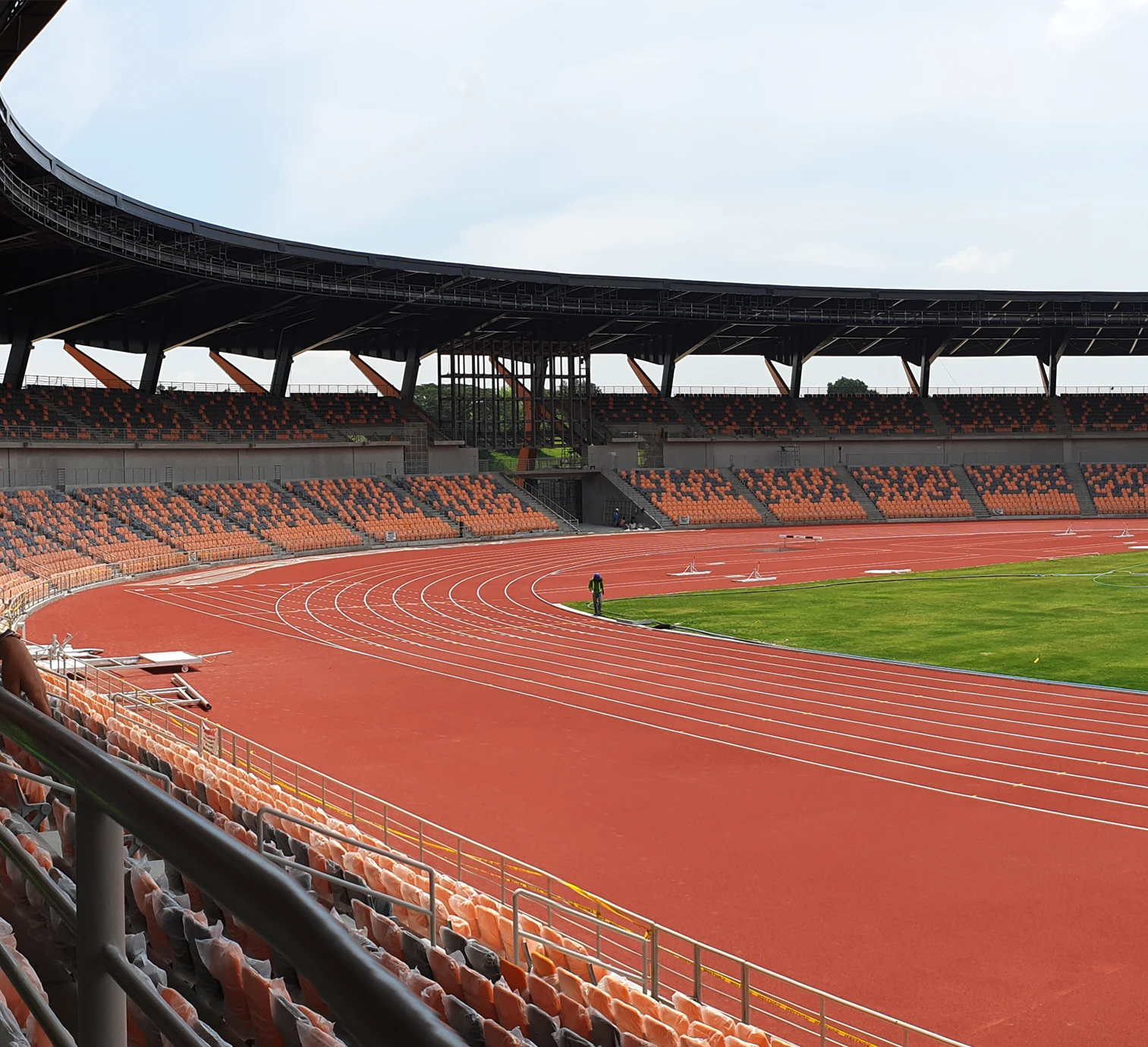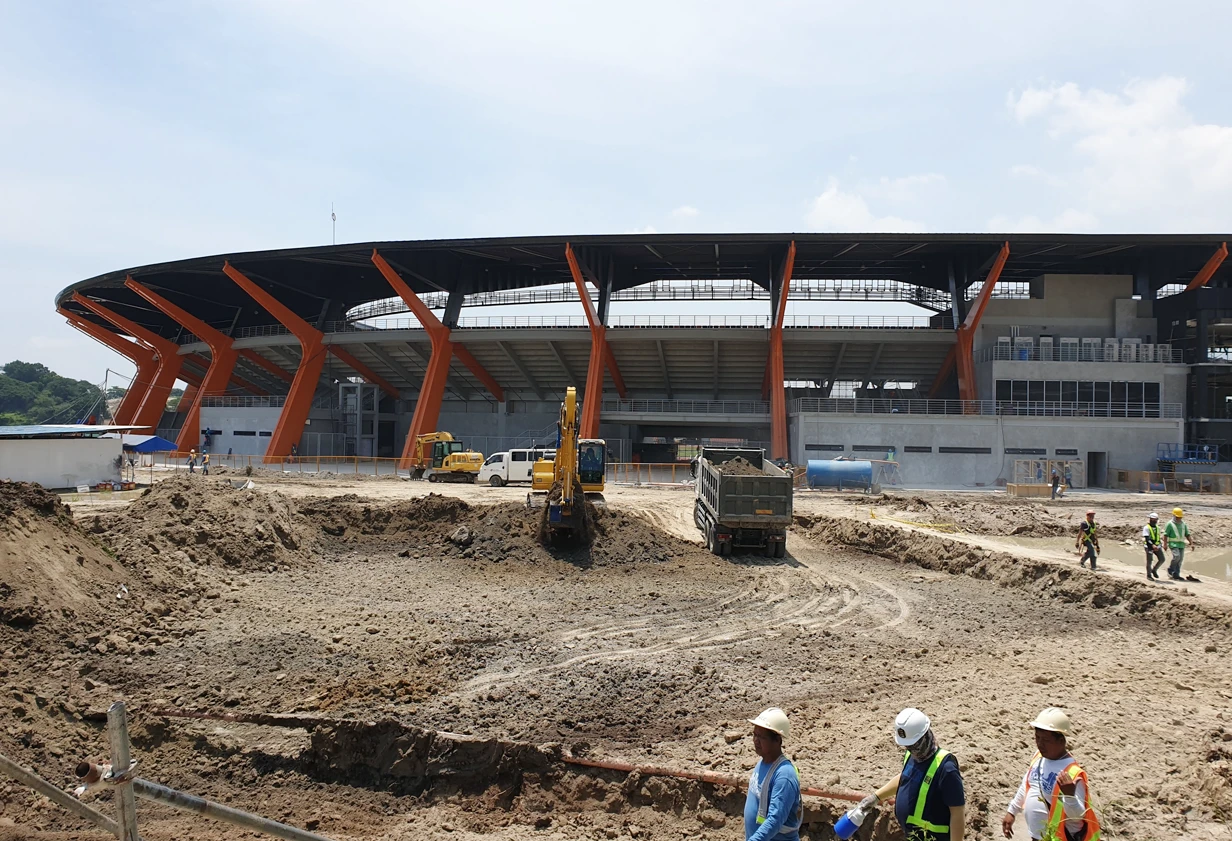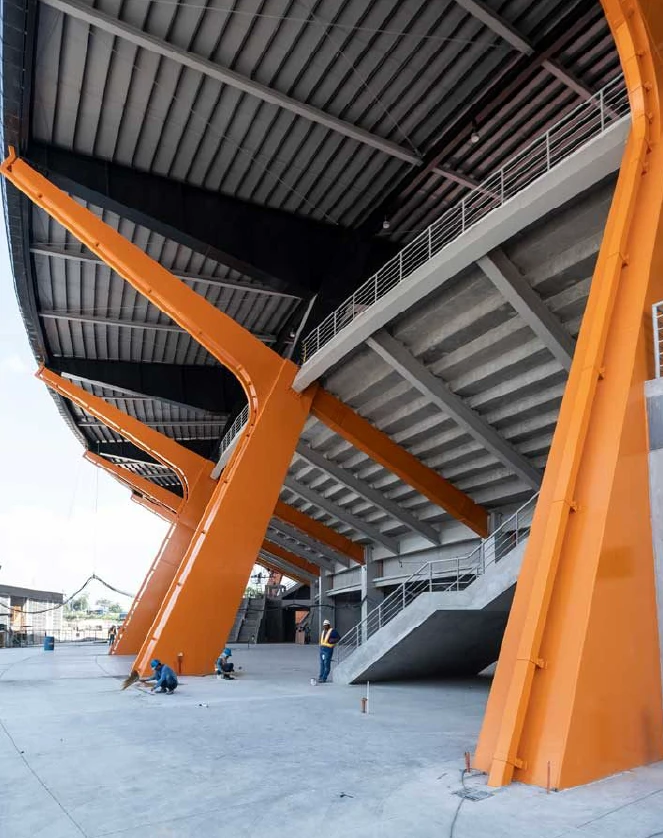Client
Hilmarc’s Construction Corporation

Boundaries Redefined
Client
Hilmarc’s Construction Corporation
Typology
Institutional
Size
Athletic Stadium: 61,571 sqm I Warm-up Track: 12, 510 sqm
Services
VDC Modeling, Architectural and Engineering Integration and Documentation I In collaboration with ROYAL PINEDA +
Location
New Clark City, Tarlac, Philippines
Year
2018 - 2019
A landmark of Philippine sports development, the New Clark City Athletics Stadium was built to meet international competition standards and delivered under extraordinary time pressure. Designed by ROYAL PINEDA + (formerly BUDJI+ROYAL Architecture+Design), the 20,000 seat stadium served as the main venue for the 2019 Southeast Asian (SEA) Games, where it welcomed 5,630 athletes from 11 nations. Situated in Capas, Tarlac, the stadium is the crown jewel of the New Clark City Sports Hub.
Aidea was called upon early in the design phase to assess the feasibility of the structural system and validate it through Virtual Design and Construction (VDC). By creating a digital model to simulate performance and constructability, Aidea enabled real-time collaboration across disciplines and accelerated the decision-making process. This integrated workflow allowed the project to be completed in just 18 months—an unprecedented pace for a stadium of this scale—and handed over more than 500 days before the official opening.

Rooted in place and purpose, the stadium’s elliptical, open-air form draws inspiration from Mount Pinatubo’s rugged terrain. Its architecture embraces the contours of the landscape, and volcanic ash was incorporated into the concrete mix, creating durable, low-maintenance surfaces while grounding the structure in its natural context. Designed to Olympic standards, the facility features an IAAF-certified nine-lane track and world-class field amenities, delivering both performance and prestige.

Through Virtual Design and Construction (VDC), Aidea delivered a level of precision and coordination that significantly accelerated the project timeline. By simulating construction sequences and resolving issues early, we streamlined workflows, minimized rework, and enabled multiple phases to progress in parallel. This approach addressed the project’s core challenges—constructability, complex processes, and time constraints—while ensuring design fidelity. More than just meeting deadlines, our work demonstrated how digital tools can enhance both performance and meaning. By aligning architectural intent with engineering precision, Aidea helped realize a stadium that is both technically world-class and deeply rooted in local identity. The result: a national landmark delivered ahead of schedule and built to inspire generations to come.